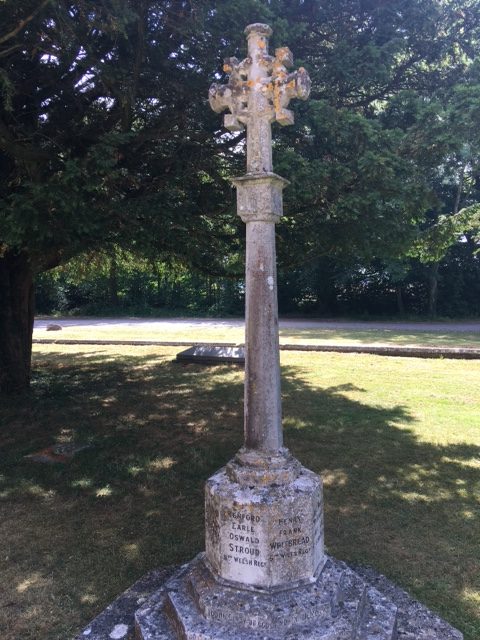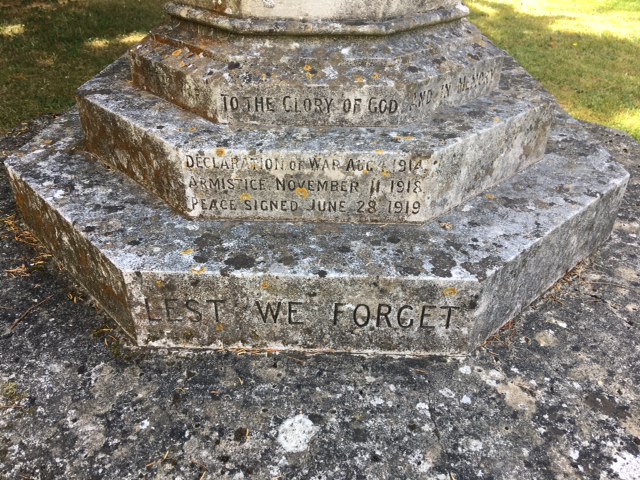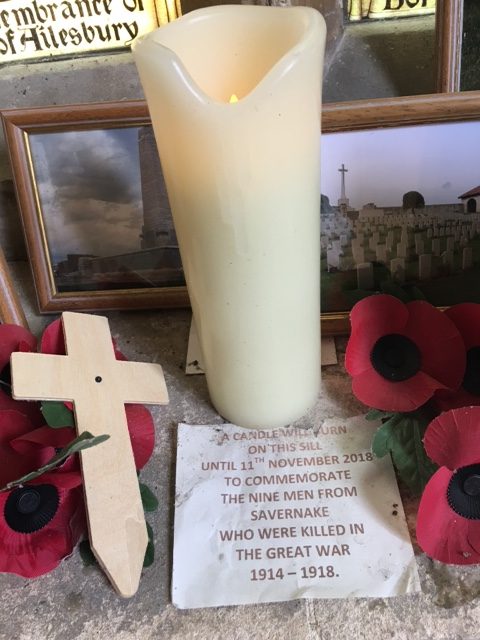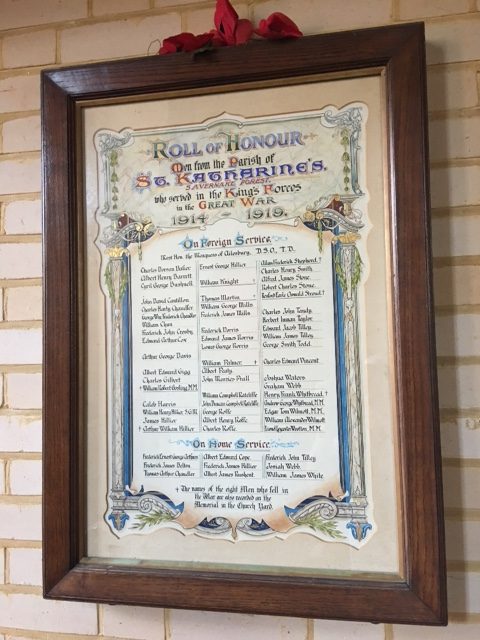St Katherine’s Church, Savernake
1914 – 1918
A century of remembering with pride and gratitude
Each year, the St Katharine’s Church PCC has remembered the servicemen killed during the First World War from the parish of St Katharine’s at a service near to the centenary of the soldier’s death.
On the 17 June 2018, a special service was held at St Katharine’s Church, Savernake Forest, to commemorate the lives of the three service men who died during 1918 (as has been done for each of the fallen in the centenary of their deaths) and whose names are on St Katharine’s War Memorial. Included here is the address that Anthony Leask read during the service, which was extremely moving. A number of descendants of those who were killed joined the congregation.
We Will Remember Them
A Soldier’s Prayer
Issued by the Chaplain-General to all Soldiers, August 1914
Almighty and most Merciful Father,
Forgive me my sins:
Grant me Thy peace:
Give me Thy power:
Bless me in life and death:
For Jesus Christ’s sake. Amen
These are the men of this parish who laid down their lives in the Great War 1914-1918:
William Thomas Knight
Henry Frank Whitbread
Renford Earle Oswald Stroud
Arthur William Hillier
Allen Frederick Shepherd
Cyril Walter Carleton Wasey
William Robert Gosling
William Henry Palmer
Thomas Martin
Commemoration 1 February 1920
The parishioners of St Katharine’s commemorated the Great War by holding a special service in their beautiful Forest church last Sunday (1 Feb) for the unveiling and dedication of a memorial cross in the churchyard, and the Bishop of Salisbury honoured the parish with his presence. The Vicar (Reverend GH Scholfield-Frobisher) carried the pastoral staff, and after reading the opening sentences of the Burial Service Psalm XXIII was chanted, and the lesson read from Wisdom iii 1-9, followed by the hymn “Fight the good Fight”. The Bishop gave an excellent and helpful address, which will be remembered for many a long year by the crowded congregation.
Extract from Bishop of Salisbury’s address:
“For the moment the call to war sounded in the villages and towns of Wiltshire the most wonderful thing happened that has ever happened. Those undemonstrative, reserved and unenthusiastic fellows sprang to their feet, no one compelling them, and streamed out, flinging down their spades in the field, their pens in the offices, and their tools in the workshop, all ready to go out in defence of their country. That was a great achievement before which the world as far as it knew it stood amazed, and it was an achievement that no short national memory could ever be so guilty as to forget.”
During the singing of the hymn “O valiant hearts, who to your glory came” the choir reformed in procession, followed by the Bishop; immediately behind him came a hundred and twenty of the Comrades of the Great War who lived in St Katharine’s and adjoining neighbourhood, and proceeded to the churchyard, where the Marchioness of Ailesbury (who was accompanied by the Marquess and their two children Ladies Ursula and Rosemary Brudenell-Bruce) unveiled the cross with the words: “To the glory of God and to the lasting memory of the brave men of this parish I unveil this memorial”. Three buglers from the Wilts Regimental Depot at Devizes sounded the “Last Post” and “Reveille”. The Bishop read the dedicatory prayers, especially remembering the names of the eight men. The hymn “When I survey the wondrous cross” having been sung, and Nunc Dimittis chanted, the procession reformed. In passing again through the church door the Marchioness, using similar words, unveiled the illuminated roll of honour to the memory of the sixty-one men of the parish (one in seven of the population) who joined up, fifty-two on foreign service and nine on home service.
The Memorial Stone was made of Portland stone by Messrs G Maile & Son Sculptors of Easton Road, London.
If you have information about other servicemen from the Savernake parish who are commemorated on the war memorial and/or buried in the churchyard, which you would like to share with us please get in touch with the team at St Katherines please email: st-katharines@savernaketeam.com





